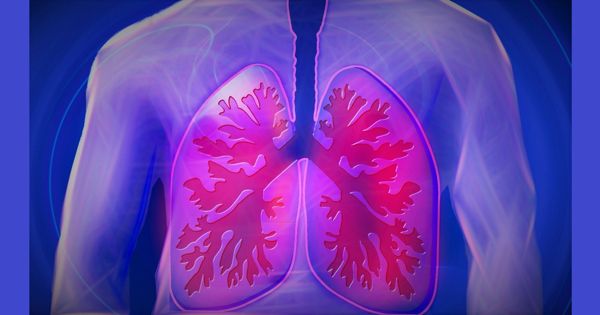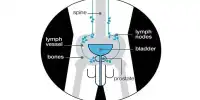A comprehensive review by researchers and colleagues at the University of North Carolina of hundreds of publications, including more than two dozen articles on prevention screening for low-dose spiral, computed tomography (LDCT) lung cancer, shows that there are both benefits and harms from screening.
The results of the decade-long National Lung Screening Trial (NLST) showed that LDCT was better able to detect lung cancer than conventional x-rays in current or previous heavy smokers. Based on these results, the United States Preventive Services Task Force (USPSTF) initially recommended low-dose CT screening for people aged 55 to 80 with a 30-year history of smoking. Subsequently, additional screening test results were published, including a European trial called NELSON, the next largest NLST study. NELSON also found a reduction in lung cancer deaths due to screening.
Evidence review examines both benefits and harms for lung cancer screening. UNC scientists and their collaborators evaluated and synthesized data from the seven trials to arrive at a comprehensive, current assessment of harms and benefits of screening.
It has been almost a decade since the initial recommendations were formulated, and the USPSTF has therefore begun an updated review of the evidence. UNC scientists and their collaborators evaluated and synthesized data from the seven trials to provide a comprehensive, up-to-date assessment of the harms and benefits of screening.
New recommendations, based on this evidence review, broaden the eligibility criteria for screening by lowering the screening age from 55 to 50 years and reducing the pack-year requirement from 30 to 20 pack-years. There were several reasons for this change in eligibility according to the reviewers; one was to promote health equity, partly because African Americans have a higher risk of lung cancer with lower levels of exposure to smoking.
“Two large studies have now confirmed that screening can reduce the chance of dying from lung cancer in people at high risk. However, those considering screening should know that a relatively small number of people who are being screened benefit, and that screening can also lead to real harm, “Daniel Reuland, MD, MPH, one of the review authors, a member of the UNC Lineberger Comprehensive Cancer Center and a professor in the Department of General Medicine and Clinical Epidemiology at the UNC School of Medicine, said.

Physicians are looking for lung spots or nodules that may represent early lung cancer in the CT scan. Screening harms may arise from the fact that the vast majority of the nodules found during screening are not cancerous. These findings are known as false positives, and patients with these outcomes usually require additional scans to see if the spots are growing over time. In some cases, such false positives lead to unnecessary surgery and procedures. Throughout the process, patients may experience mental distress as a result of a possible diagnosis of cancer.
“Applying screening tests to a population without symptoms of disease can certainly benefit some people, but it also has the potential to cause some harm,” said lead author Daniel Jonas, MD, MPH, who conducted most of this research while he was a professor at the UNC School of Medicine and is now director of the Division of General Internal Medicine at Ohio State University.
“In the case of lung cancer screening, we now have more certainty that some individuals will benefit, with some preventable deaths from lung cancer, and we also know that others will be harmed. The USPSTF weighed the overall benefits and harms, and on balance, based on our review and modeling studies, determined that LDCT screening had an overall net benefit for high-risk people aged between 50 and 80 years.”
Reuland and Jonas note that, encouragingly, the rate of lung cancer has been declining, reflecting changing smoking patterns in recent decades. The population eligible for screening is therefore also projected to decline. At this point, however, they do not predict that these trends will change screening recommendations in the next decade or so.
“Different trials have used different screening approaches and we still do not know how often screening should be done or which approach to categorizing lesions is best suited to reducing the harm, cost and burden of screening while retaining the benefits,” said Reuland, who is also a research fellow at the Cecil G. Sheps Center for Health Services Research at UNC. “I would give priority to this as an important area of future research, as it could probably be addressed by implementing less expensive studies or using approaches other than those used in the large-scale studies we have just reviewed.”
















